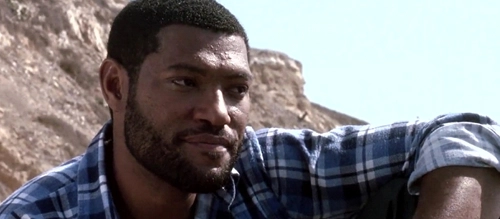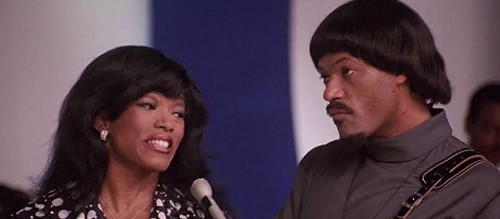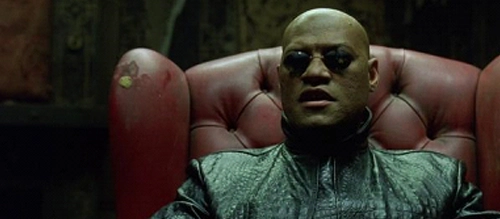Laurence Fishburne: 3 Career-Defining Performances
The career of Laurence Fishburne is one that might allude many of you out there. His is a name that you have undoubtedly heard of, but his plethora of work is often fleetingly remembered. Fishburne is an actor that has graced us with his talents not only in film but also in the world of T.V., as well as some hugely memorable stage work. A long list of Emmy, Tony, and Academy Award nominations (and a few wins of course) decorate his honours list, and don’t forget his part in one of the greatest and most iconic science fiction films of all time, The Matrix (1999).
His performance as Morpheus is what Laurence Fishburne will be eternally remembered for but, in all his other years as an actor, Fishburne has tended to play interesting and thought-provoking characters. Fans of the Francis Ford Coppola war film Apocalypse Now (1979) will surely remember a fresh-faced Fishburne appearing as the cocky but charming Tyrone Miller aka Mr. Clean. Determined at a young age to break into the film industry, a then 14-year-old Fishburne lied about his age to get the part in the legendary project – how different his life could have been if this mischievous decision blew up in the young man’s face.
Francis Ford Coppola’s film should have been the catalyst for a rapid rise to stardom, and yet Fishburne’s career trajectory wasn’t as comfortable as one might think. The early part of the 1980s led the actor down a path of minor television and stage appearances, while working as a bouncer in the New York club scene. Such a resolute figure wasn’t deterred though, and it was Coppola once again that gave the actor another break with a supporting role in The Cotton Club (1984), before he popped up in Steven Spielberg’s critically acclaimed film The Color Purple (1985). The 80s were an important part of Fishburne’s apprenticeship, opening the door to the most successful and important decade of his career: the 1990s.
The 90s is the decade that will forever define Laurence Fishburne as a screen presence, and it is in these 10 years that his three career-defining performances are found. What began with King of New York in 1990, ended with his role as Morpheus in The Matrix in 1999. The decade turned him into a bona fide star, one with incredible talent and diversity, and led to formidable success in the new millennium in franchises such as John Wick and ‘Hannibal’. We at The Film Magazine are here for something in particular though, so let’s delve into the three performances that have cultivated an impressive and often underappreciated career.
Follow @thefilmagazine on Twitter.
1. Boyz n the Hood (1991)

1991 was the year that Larry Fishburne (the name he went by up until 1993) got his first major iconic role in the late John Singleton’s legendary Boyz n the Hood. The film’s undeniable legacy was cemented from the beginning, and it hasn’t waned since.
The film depicts life on the mean streets of South Central Los Angeles through the eyes of the young Jason “Tre” Styles 111 (Cuba Gooding Jr.), and his friends Ricky Baker (Morris Chestnut) and Darrin “Doughboy” Baker (Ice Cube), the latter now being a fully-fledged member of the Crips gang after his release from prison. The film’s grittiness and authentic representation of such violent streets is what propelled it into the public eye, but it was the teachings and the wisdom of Fishburne’s character, Jason “Furious” Styles Jr., that made the biggest impact.
Fishburne is tremendous in this authoritative role as the former soldier and current community activist fighting for what he believes and guiding his impressionable son into the light. His various speeches throughout the film – whether a discreet talk with his son or his preaching on the side of the road – are some of Boyz n the Hood’s most intelligent and powerful moments. Boyz n the Hood is etched into black history; furious is the man who knows all too well about the racism and discrimination that his people have faced and continue to experience. And yet, instead of violence, this monk-like figure relies on education, inspiration, and enlightenment to help his brothers and sisters in the fight against the system and the people that enforce it.
The South Central streets are ruthless. They will chew you up and spit you out. Fishburne’s Furious knows this, and his parental instincts go into overdrive when Trey moves in with him. The connection that the two characters develop is meaningful; Trey not only has a caring father figure in his life to keep him on the straight and narrow, but he has an actual father, something that the other boys in the area do not. Fishburne’s interpretation of the character is majestic; his mannerisms, his use of intelligent thought and reasoning, is what separates the character from the rest, and it is this that makes him truly memorable.
A lack of award nominations can’t even derail the impact that Furious Styles had on the future of black cinema, and we’ve seen multiple amalgamations of this character in cinema ever since – you could say that Morpheus is just another design of the same character, teaching the same ideologies for a better and more fruitful future. Fishburne really knocked it out of the park in Boyz n the Hood, and his success in the role is what allowed him to step it up a notch for his next gigantic performance in 1993.
2. What’s Love Got to Do with It (1993)

Brian Gibson’s What’s Love Got to Do with It is a film that needs little introduction. This interpretation of the life and career of the legendary Tina Tuner and her abusive relationship with Ike Tuner is one of the greatest biopics of all time – it never shies away from the violence of their relationship and is as brutal as it is magnificent. Ike and Turner: the band, the relationship, the… romance? Their venomous relationship shrouded an incredibly successful musical partnership that had the pair headlining arenas with the likes of The Rolling Stones and Otis Redding before it all fell apart because of Ike’s self-destructive ego and his cowardly violent streak.
The film’s success couldn’t have been what it was without two monumental performances leading the way, and that’s exactly what it had. Reunited so soon after both appeared in Boyz n the Hood (Bassett portrayed the ex-wife of Fishburne’s character in the 1991 film), Angela Bassett portrays Tina and Laurence Fishburne plays Ike; an incredibly formidable on-screen partnership that led to the pair receiving nominations at that year’s Oscars. What’s Love Got to Do with It begins very softly by exploring the origins of Tina Turner, real name Anna Mae Bullock. The future star’s love of music, her incredible singing voice, and how she fell in love with her soon-to-be husband and eventual nemesis. Even though it’s Tina’s singing voice you hear in the film, Bassett’s perfect lip syncing and expertly performed mannerisms through months of endless mimicking make you think that it truly is her, but it is Fishburne’s performance that ends up being the most iconic.
Laurence Fishburne’s iteration of Ike is the devil incarnate. It is the complete opposite representation of a man than his performance as Furious Styles – to swing so far right with this character is a testament to Fishburne’s diverse acting palette. The film was known as not being absolute gospel, but the material given by Tina herself (from her autobiography “I Tina”), which was then merged with Kate Lanier’s exquisite screenplay, allowed Fishburne to create his version of the man that very much existed in one form or another. The manipulation that began with niceties but was really a form of grooming is truly shocking and vicious, and Fishburne nails this.
It says a lot about Laurence Fishburne’s performance that the man himself, the real-life Ike Turner, praised Fishburne for the role in his own autobiography “Takin’ Back My Name”, even if he did claim the film ruined his reputation – it seems as if you did an awful lot of that yourself, Mr. Turner. Some of the scenes were said to be so tough to film, mentally and physically, that it becomes slightly poignant when you understand that Fishburne was incredibly attentive towards Bassett during these scenes, always wanting her to feel comfortable and at ease. Not only is the man a terrific actor but he’s a genuinely nice guy it seems as well, which only adds to the magnitude of this performance.
Two iconic roles in two years though, it doesn’t get much better than that, does it? If only he knew where these two performances would eventually lead him – to a dystopian future with monstrous acclaim.
3. The Matrix (1999)

For an actor to end the most critically acclaimed decade of their career, as well as wrap up the millennium, with a film like The Matrix is almost unheard of. It could have been very different though, if Will Smith accepted the role of Neo and Sean Connery (yes, you read that right) didn’t choose Entrapment instead – although, let your mind wander for a bit and just imagine that possibility. It was everyone else’s gain though because, looking back, Laurence Fishburne and Keanu Reeves were perfectly cast in The Wachowski’s science fiction epic. With a script and premise that hardly any of the cast and crew understood (apart from Fishburne of course… or at least so he claims), and with the schedule packed with fighting choreography, wire-training, special effects, and managing injuries, it was doomed to fail. Thankfully, it did not.
After Thomas Anderson, “Neo”, begins to accept that things aren’t all as they seem to be in his world of computer hacking, a mysterious woman called Trinity (Carrie-Anne Moss) explains that a man named Morpheus (Fishburne) has all the answers Neo needs. The wheels of thought in Neo’s brain begin to move, and it’s not long before he meets the mysterious Morpheus who preaches his now infamous red pill, blue pill speech to him, thus beginning a journey of awakening. Morpheus is captain of a ship in the real world, but also acts as the preacher and mentor to the others in his search for “The One”, something he thinks he has found in Neo.
Morpheus is like an amalgamation of several of Laurence Fishburne’s previous characters; the deep-thinking attitude of Furious, the often over confidence of Ike Turner, and the caring nature of Fishburne himself. His portrayal of Morpheus is one of the most recognizable performances in modern cinema; whether it’s the tiny black sunglasses or the long leather coat, Morpheus is as big and important to the franchise as Neo is.
His character has the best dialogue in the series too. Quotes such as “Have you ever had a dream, Neo, that you were so sure was real?”, and “Don’t think you are. Know you are,” as he proceeds to beat Neo black and blue in the now famous dojo scene, are particular standouts. Morpheus is Yoda, he is Gandalf; an all-powerful figure that always has the good of the world in his mind.
Fishburne couldn’t have played the role any better than he did. Without him, The Matrix was a guaranteed bust – that might be brutally honest, but everyone knows it to be true. Say what you like about the sequels – they do run hot and cold – but Morpheus is one of the shining lights in both. The dynamic that Reeves and Fishburne have is undeniable; they are magnetic and propel each other to new heights in each scene they share – an even greater chemistry than the one Fishburne had with Bassett.
It feels almost poetic that Laurence Fishburne would end the decade with a character of such note. After struggling for years for a role of any significance, for him to then enter the 2000s as this iconic figure is a dream so real it becomes truth. Where do you go from success like this though? It’s a task of immense pressure to keep up with appearances, for most people that is, but one that Laurence Fishburne grabbed with both hands and drove forward.
Recommended for you: Where to Start with Keanu Reeves
In the years since The Matrix, Fishburne has found considerable success. Along with his role as Jack Crawford opposite Mads Mikkelsen and his reunion with Reeves in John Wick, Fishburne has also appeared in both the Marvel Cinematic Universe and DC Universe. Whatever future success Fishburne achieves, it will be because of that special decade of the 90s that changed his life forever, and as fans of cinema and the man himself, we wouldn’t want it any other way.
Written by John McDonald
You can support John McDonald in the following places:
Website: My Little Film Blog
Muck Rack: John McDonald
Twitter: @JohnPMcDonald17

